The Corsair RM1000x and RM1000i 1000W Power Supply Review
by E. Fylladitakis on September 30, 2015 8:00 AM EST- Posted in
- Cases/Cooling/PSUs
- Corsair
- RM Series
- Corsair Link
Hot Test Results
Moving on to our hot test results, as the following tables show, the power quality of the RM1000i/RM1000x is significantly upgraded in comparison with the original RM1000. The maximum voltage ripple on the 12V line is now 28 mV, less than half that of the previous model and four times below the 120 mV design limit. Similar performance improvements can be seen on the minor voltage rails as well, with the maximum ripple of the 3.3V and 5V lines being 10 mV and 20 mV respectively. Voltage regulation is greatly improved too, as the RM1000i/RM1000x maintain all of their voltage lines within about 1% across the entire nominal load range. In comparison, the voltage regulation of the RM1000 was between 2% and 3%.
| Main Output | ||||||||
| Load (Watts) | 202.31 W | 503.64 W | 752.79 W | 1000.53 W | ||||
| Load (Percent) | 20.23% | 50.36% | 75.28% | 100.05% | ||||
| Amperes | Volts | Amperes | Volts | Amperes | Volts | Amperes | Volts | |
| 3.3 V | 2.27 | 3.37 | 5.66 | 3.36 | 8.5 | 3.34 | 11.33 | 3.33 |
| 5 V | 2.27 | 5.13 | 5.66 | 5.12 | 8.5 | 5.09 | 11.33 | 5.08 |
| 12 V | 15.1 | 12.12 | 37.75 | 12.07 | 56.62 | 12.03 | 75.5 | 11.99 |
| Line | Regulation (20% to 100% load) |
Voltage Ripple (mV) | |||||
| 20% Load | 50% Load | 75% Load | 100% Load | CL1 12V |
CL2 3.3V + 5V |
||
| 3.3V | 0.95% | 6 | 6 | 8 | 10 | 8 | 16 |
| 5V | 0.8% | 8 | 12 | 16 | 20 | 12 | 22 |
| 12V | 1.05% | 12 | 16 | 22 | 28 | 26 | 14 |
The electrical performance of the RM1000i/RM1000x seems largely unaffected by the high ambient temperature. This is not unexpected from PSUs rated at 50°C and designed capable to operate without a fan. The average efficiency drop across the entire load range is 0.5%, evenly distributed across it. Technically, the RM1000i/RM1000x meet the 80Plus Gold certification limits even with ambient temperatures greater than 45°C.
Inside our hotbox, the fan began spinning as soon as the load reached 400 Watts. Still, the fan did not further speed up until the load exceeded 700 Watts, and beyond that the maximum speed did not go much higher than what we saw in our our room temperature testing, maintaining very low sound pressure levels. The internal temperatures remain relatively low, considering the high ambient temperatures, and are noticeably lower than the original RM1000 as well. However, we should mention that the original RM1000 had slightly lower noise figures under maximum load, indicating that the cooling profile of the newer RM1000i/RM1000x units is a little more aggressive.


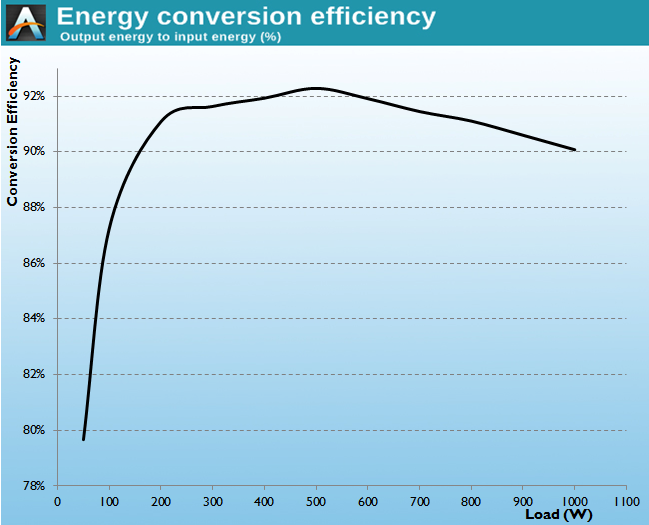
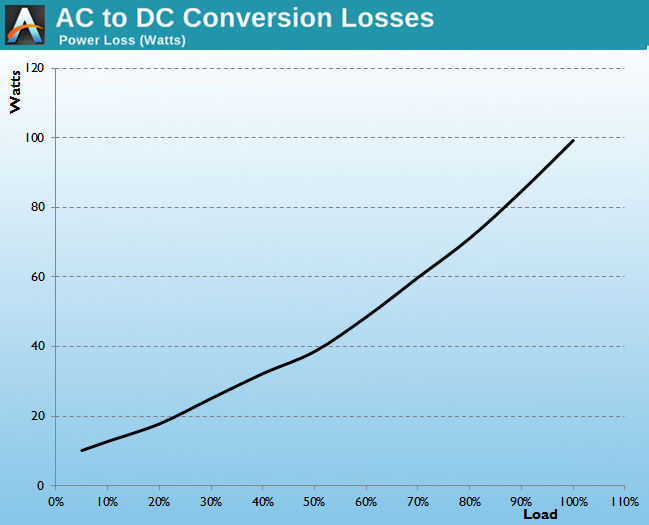
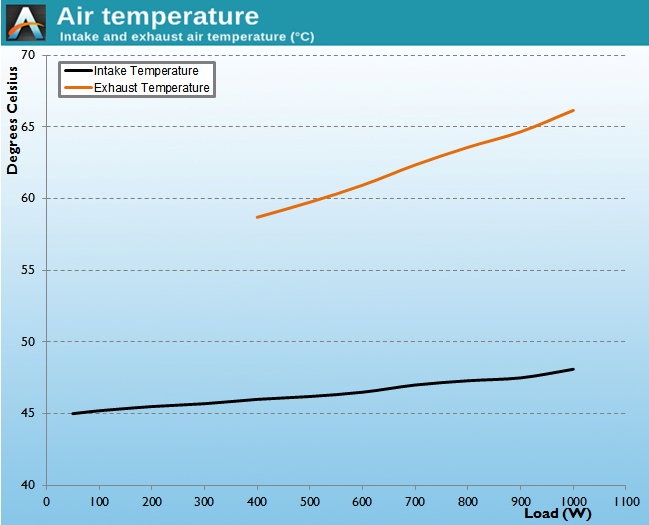
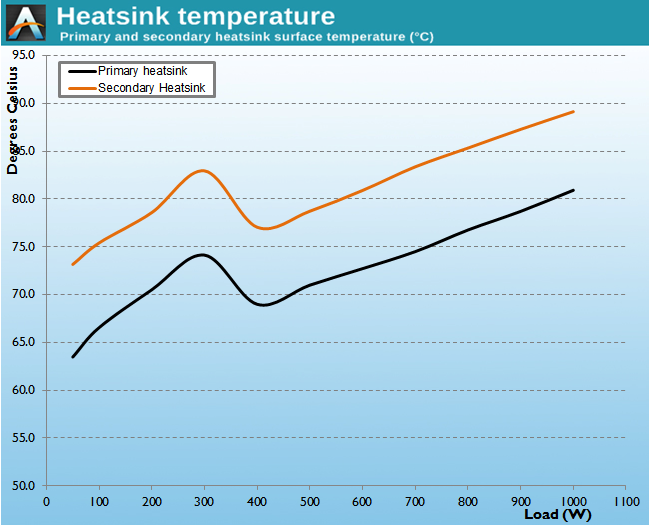
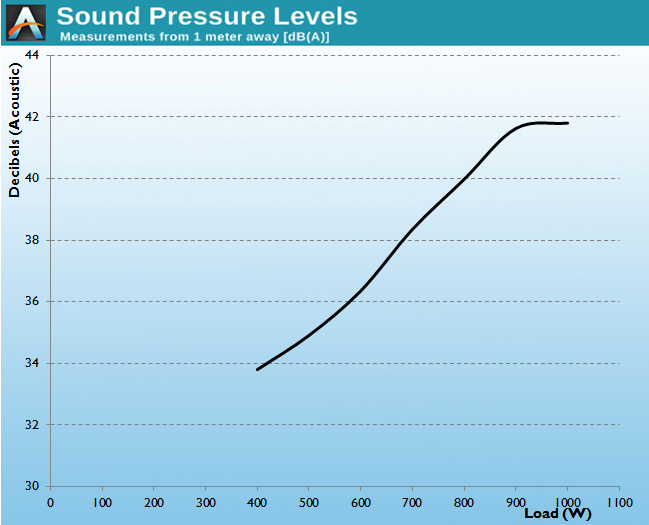








47 Comments
View All Comments
jonnyGURU - Thursday, October 1, 2015 - link
Uhhh.... "Excited"? I was simply answering his question.elforeign - Wednesday, September 30, 2015 - link
I can vouch for the quality of this product, the RMi1000W in particular. I have had one since late July when I got it for my 24/7 BOINC Crunching rig. It powers my overclocked i5 and my 2 GTX 970's along with the other components in the system, SSD, HDD, 110i GT AIO etc. The ambient temps in my home are around 22c and thus, even when my system is pulling ~600watts the fan does not turn on because the PSU itself is not heating up that much even under load. Also, the efficiency meter from the Link interface marks around 91.7%The only knock one can give this PSU is the fact that the EPS, PCIE and ATX power cables are rather rigid and thick. It took some work to get the ATX cable into the motherboard. I brought up this complaint to Corsair. As of yesterday, Cablemod is now offering a set of EPS/PCIE/ATX individually sleeved cables for this PSU that I plan to purchase.
LaRock0wns - Wednesday, September 30, 2015 - link
For anybody going to get or make custom cables for this PSU, Corsair changed the connector for the ATX 24-pin cable that plugs in to the PSU. The PSU is a 18 + 10 pin connector instead of the standard 14 + 10 pin.HOOfan 1 - Wednesday, September 30, 2015 - link
They also have capacitors on the cables to aid in ripple suppression...so getting custom cables would give you different results from what is shown in the reviewlozikosaz - Wednesday, September 30, 2015 - link
Aren't capacitors useless in interior cables, which use direct current?AnnihilatorX - Thursday, October 1, 2015 - link
It will help suppress high frequency noise.DanNeely - Wednesday, September 30, 2015 - link
I've seen the 18+10 connector on a number of high end modular PSUs over the last year or so; I suspect it's the ODM's design not corsairs. Elsewhere I was told that the extra wires are used for voltage monitoring at the mobo end to actively adjust for any voltage drop.jonnyGURU - Wednesday, September 30, 2015 - link
It's not the ODM design. The extra 4-pins (actually, 3. But you can't have an odd number of pins on a connector) are for +12V sense, +5V sense and extra ground. Seasonic and Super Flower have been using this method in the past to improve voltage regulation. Corsair started doing this recently as well for the same reason.To address the concern of using cables without sense and caps: You can do it, but you'll end up with the same level of voltage regulation and ripple suppression performance as an HXi.
extide - Wednesday, September 30, 2015 - link
Cant believe it's taken this long for high end PSU's to implement separate sense lines. Any decent lab grade PSU has had that for decades, lol.jonnyGURU - Thursday, October 1, 2015 - link
Correct!But it's a cost adder and since it's only something you'll see in reviews and pretty much any decent PSU is well within Intel's (sloppy) ATX spec, it's not very common.